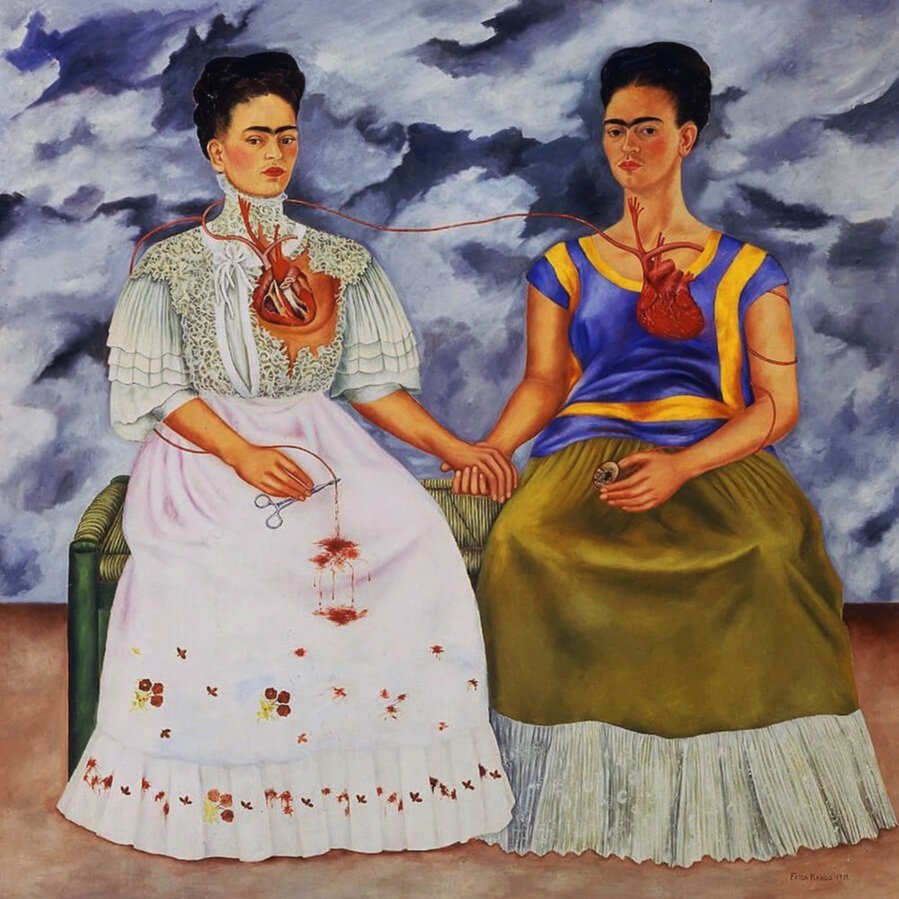The Dance of Opposites
Art as a Bridge Between Nature, Emotions, and Visual Elements
Opposites in art are the very essence of creativity, offering not only visual interest but profound insights into life's complexities. Throughout history, artists have harnessed the interplay of opposing elements, drawing inspiration from nature's beauty and the depths of human emotions. Just as nature juxtaposes poisonous plants with antidote plants, artists employ contrasting elements to evoke powerful emotions and introspection. Through exploring opposites, we gain a deeper understanding of life itself.
An example is Picasso's monumental masterpiece, "Guernica" (1937), portraying the chaos and despair of war. Yet, strategically incorporated within this darkness, in the center foreground a delicate flower held by a human hand symbolizes hope and resilience. It serves as a reminder that even in the bleakest moments, there is potential for renewal and a brighter future
Frida Kahlo's self-portrait, "The Two Fridas" (1939), depicts her personal emotional duality, mirroring the contrasting emotions we experience in our own lives.
This artwork embodies profound inner turmoil and the layered nature of human existence. It reminds us that opposites coexist within us, shaping our identities and influencing our perspectives.
******************
Contemporary artist Anselm Kiefer in the 59th Venice Biennale’s installation titled “These writings, when burned, will finally cast a little light",” also explores opposites, using contrasting design elements such as light and dark, shape and line. His thought-provoking pieces challenge our perceptions and deepen our understanding of the world. Using textures Kiefer's art testifies to the transformative power of opposites, evoking profound emotions and contemplation.
Starting with the title, a quote from philosopher Andrea Emo, both the artist and the philosopher want us to remember that these paintings come from negating or getting rid of other things, which they're placed on top of – just like how life sometimes works. It's an intense and unsolvable mix of opposites.
Emotions are understood through opposites. Sadness informs happiness, and death informs life. By experiencing the depths of sadness, we appreciate the heights of joy. Similarly, contemplating mortality allows us to embrace and cherish the preciousness of life itself.
Susan Cain author of Bittersweet, demonstrates the power of opposites through an event involving the cellist playing in the city square of Sarajevo during the Bosnian War in the 1990s. The cellist, Vedran Smailović, played his cello in the ruins of the city to honor the victims of the bakery bombing. He played a piece known as "Albinoni's Adagio," and has become a symbol of resilience and the power of music in the midst of tragedy. The music is haunting and beautiful.
In the realm of art and beyond, the marriage of opposites resonates as a symphony of life's intricate harmonies. It is a reminder that, much like the strokes of a painter’s brush or the chords of a timeless musical composition, life's complexities find their most resonant expression in the interplay of light and shadow, joy and sorrow. And just as every masterpiece is imbued with contrast, so too is our existence enriched by the embrace of its opposing strands.



